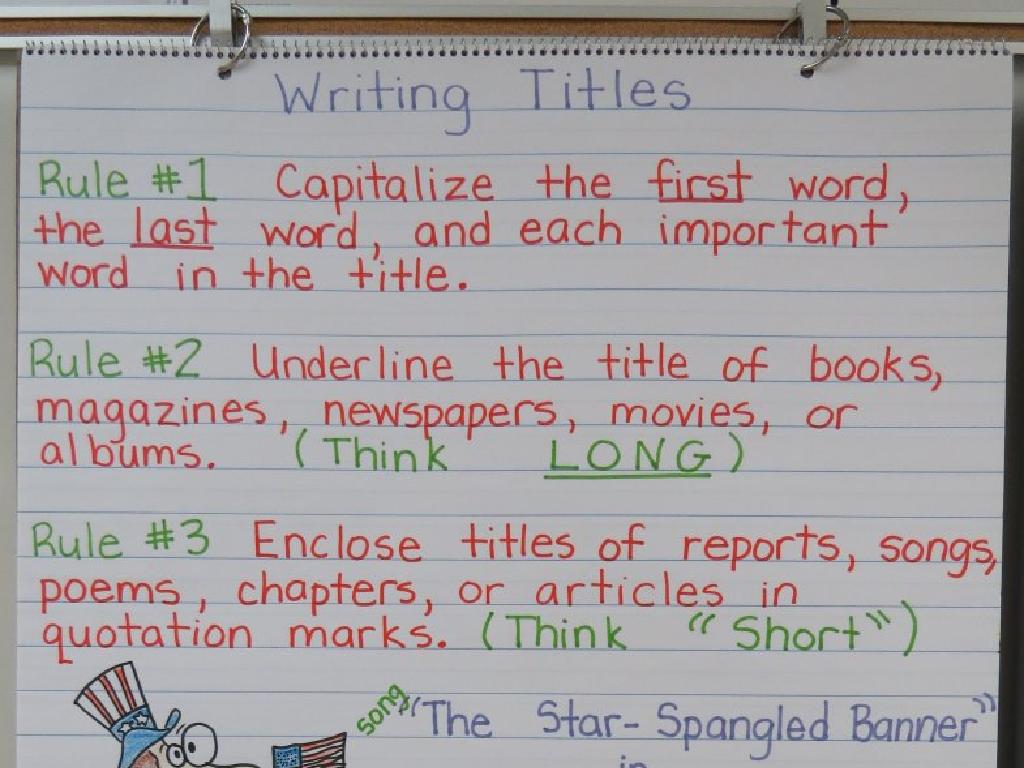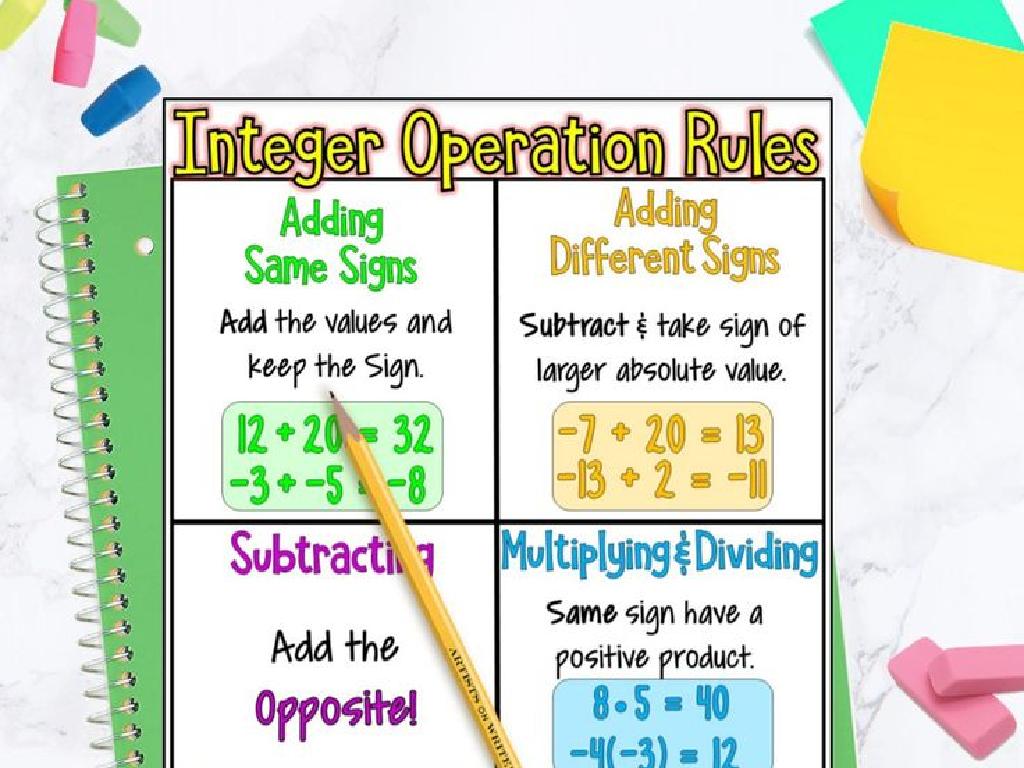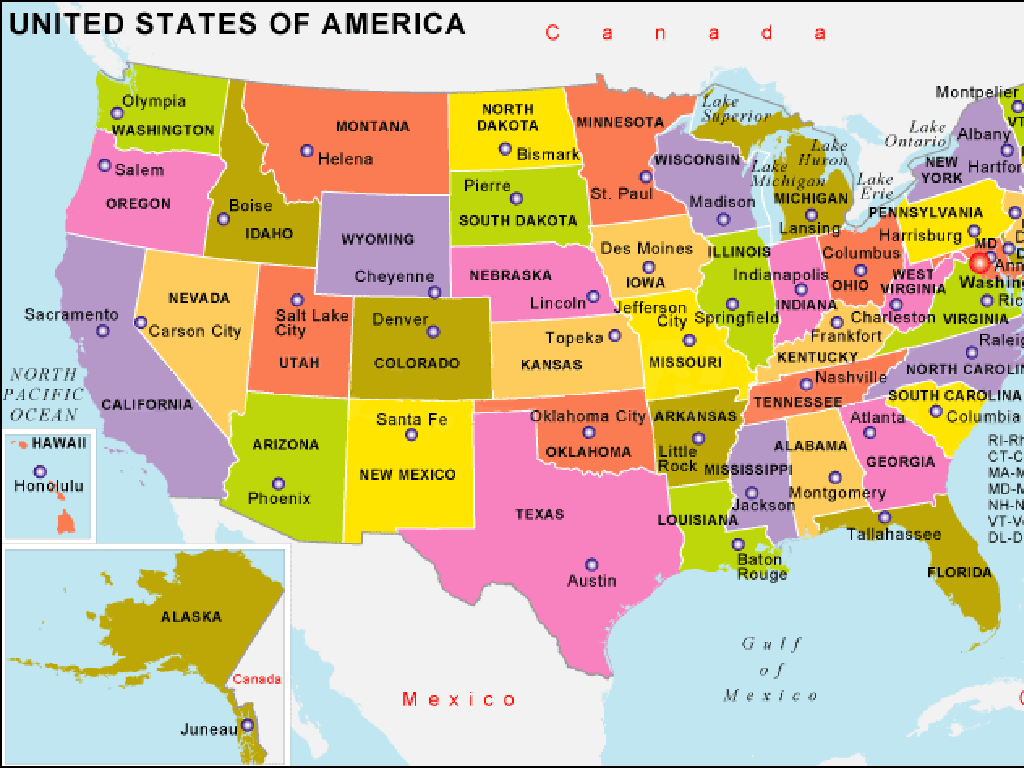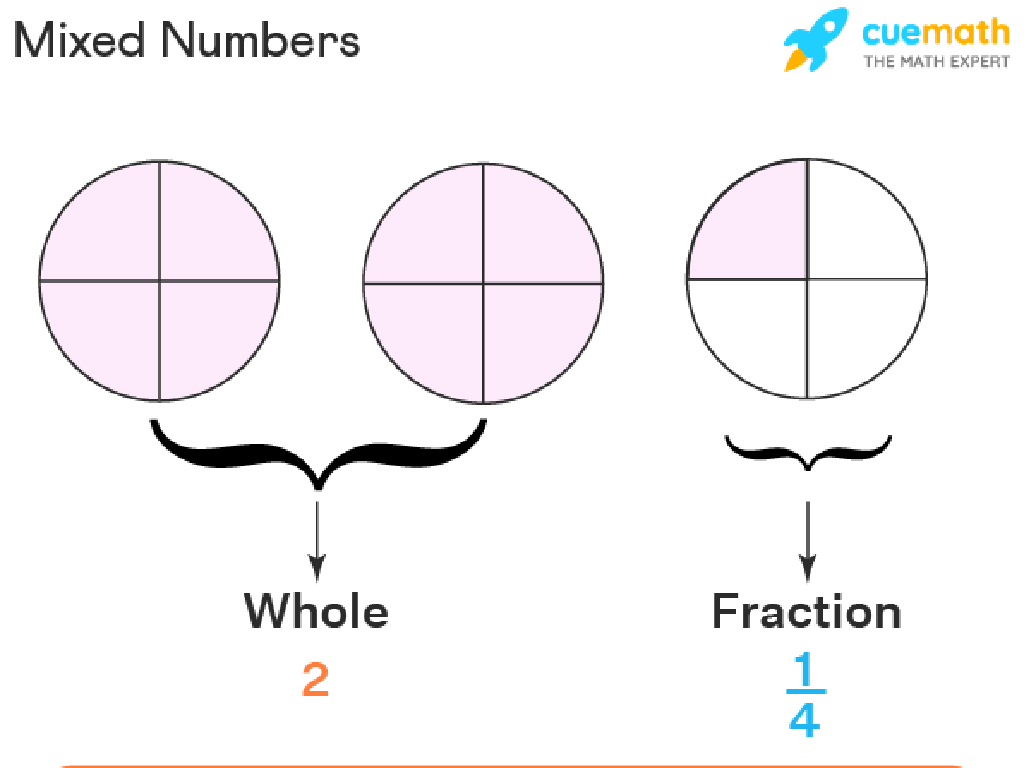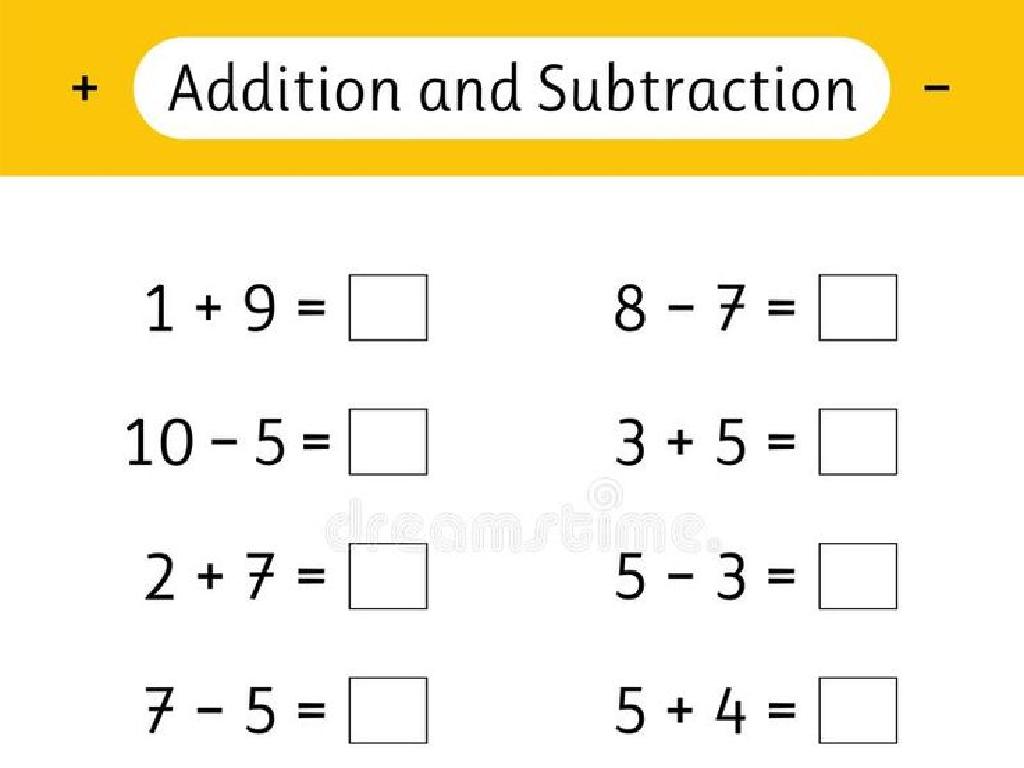Use Relative Pronouns: Who, Whom, Whose, Which, And That
Subject: Language arts
Grade: Fifth grade
Topic: Pronouns
Please LOG IN to download the presentation. Access is available to registered users only.
View More Content
Exploring Relative Pronouns
– Pronouns replace nouns
– Types of relative pronouns
– ‘who’, ‘whom’, ‘whose’, ‘which’, ‘that’
– The role of relative pronouns
– They connect clauses and provide details
– Their importance in communication
– They make sentences clear and concise
|
This slide introduces the concept of relative pronouns and their function in sentences. Begin by explaining that pronouns are used to replace nouns to avoid repetition and make sentences smoother. Then, list the relative pronouns: who, whom, whose, which, and that. Discuss how these pronouns link a dependent clause to the rest of the sentence, providing necessary information about the noun they are replacing. Emphasize the importance of relative pronouns in everyday communication, as they help to combine sentences and clarify meaning. Use examples to illustrate how relative pronouns operate within a sentence. Encourage students to create their own sentences using each relative pronoun to solidify their understanding.
Exploring Pronouns: A Quick Recap
– Pronouns replace nouns
– Instead of saying ‘Sarah likes Sarah’s car’, say ‘Sarah likes her car.’
– Personal pronouns: I, you, he, she, it, we, they
– Pronouns prevent repetition
– ‘The dog chased the dog’s tail’ becomes ‘The dog chased its tail.’
– Pronouns must agree with the nouns they replace
– Make sure pronouns match in number, gender, and person with the nouns.
|
Begin with a brief review of pronouns and their role in replacing nouns to avoid repetition and make sentences smoother. Provide clear examples of personal pronouns and how they are used in sentences. Emphasize the importance of pronoun-noun agreement, ensuring that students understand pronouns must match the nouns they replace in number, gender, and person. Use relatable examples to illustrate these points, and encourage students to create their own sentences using personal pronouns correctly.
Exploring Relative Pronouns
– What are relative pronouns?
– Words that relate to the subject and connect details
– List: who, whom, whose, which, that
– ‘Who’ for people, ‘which’ for things, ‘that’ for both
– They link clauses together
– Example: The cake, which was chocolate, tasted delicious.
– They add details about subjects
– Example: The artist who painted this is famous.
|
This slide introduces the concept of relative pronouns to the students, explaining their function in a sentence as connectors of clauses and providers of additional information about the subject. Start by defining relative pronouns and then list the common ones used in English: who, whom, whose, which, and that. Explain that these pronouns help to combine sentences or clauses to make the information flow better and provide extra details without starting a new sentence. Provide examples for each pronoun to illustrate their use in context. Encourage students to think of their own sentences using these pronouns to enhance their understanding.
Understanding Relative Pronouns: ‘Who’
– ‘Who’ refers to people
– Example: The girl who is reading
– The girl who is reading a book is my sister
– Use ‘who’ in sentences
– Replace ‘who’ with the person’s name
– Practice identifying ‘who’
– Find sentences with ‘who’ and share
|
This slide introduces the relative pronoun ‘who,’ which is used to describe people. Start by explaining that ‘who’ can be used to give more information about a person in a sentence. Show the example on the slide and explain how ‘who’ connects the girl to the action of reading a book. Encourage students to practice by writing sentences using ‘who’ and to replace ‘who’ with the person’s name to check if it makes sense. For homework, ask students to find examples of sentences using ‘who’ in books or articles and bring them to class for discussion.
Understanding ‘Whom’: A Relative Pronoun
– ‘Whom’ refers to a verb’s object
– It’s the receiver of the action in a sentence
– Used with prepositions too
– Like ‘to’, ‘for’, ‘with’, ‘at’, and others
– Example: The man to whom I gave the book
– ‘Whom’ is used instead of ‘who’ because it’s receiving the book
– Practice: Find ‘whom’ in sentences
– Look for sentences in books where ‘whom’ fits and share them
|
This slide introduces the relative pronoun ‘whom’, which is used to refer to the object of a verb or preposition. It’s important to explain that ‘whom’ is used when someone is the receiver of an action, not the one doing the action. Provide clear examples and contrast with ‘who’, which is used for the subject of a sentence. Encourage students to practice by finding sentences where ‘whom’ is appropriate, and to create their own sentences using ‘whom’ correctly. This will help solidify their understanding of how and when to use this pronoun.
Understanding ‘Whose’: A Relative Pronoun
– ‘Whose’ indicates possession
– It tells us who owns something
– Example: Student whose art won
– ‘That’s the student whose artwork won the prize.’
– Use ‘whose’ in questions
– ‘Whose book is this?’ shows ownership.
– Practice with descriptive sentences
– Write sentences describing items you own using ‘whose’.
|
The relative pronoun ‘whose’ is used to show possession and can be a useful tool in both writing and speech. It helps to clarify to whom something belongs. For example, in the sentence ‘That’s the student whose artwork won the prize,’ ‘whose’ helps us understand that the artwork, which won the prize, belongs to the student. Encourage students to ask questions and create sentences using ‘whose’ to describe ownership. This will help them grasp the concept of possession in a practical context. In the next class, students can practice by writing sentences that use ‘whose’ to describe items in the classroom or at home.
Understanding ‘Which’ as a Relative Pronoun
– ‘Which’ refers to animals and things
– Use ‘which’ in a sentence
– Helps specify one object out of a group
– Example: The book, which is on the table, is mine.
– ‘Which’ gives extra info about the book’s location
|
This slide focuses on the relative pronoun ‘which’ and its usage in sentences. ‘Which’ is used to refer to animals and inanimate objects, not people. It often introduces additional information about the noun it follows, which is not essential to the sentence’s main point but adds detail. For example, in ‘The book, which is on the table, is mine,’ the phrase ‘which is on the table’ tells us more about the book’s location. Encourage students to practice by writing sentences using ‘which’ to describe various objects around the classroom or their favorite animals. This will help them understand how ‘which’ can add descriptive detail to a sentence.
Understanding ‘That’ as a Relative Pronoun
– ‘That’ refers to people, animals, things
– It can replace ‘who’ or ‘which’ in essential information
– Used in essential clauses
– Without ‘that’, the sentence’s meaning changes
– Example: The notebook that is red is mine.
– Shows the specific notebook being talked about
|
This slide focuses on the relative pronoun ‘that’, which is versatile and can refer to people, animals, and things. It’s important to highlight that ‘that’ is used in essential clauses, meaning the clause cannot be removed without changing the sentence’s meaning. For example, in ‘The notebook that is red is mine,’ the clause ‘that is red’ is essential as it specifies which notebook is being referred to. Encourage students to create sentences using ‘that’ to describe something specific in their environment or from a story, ensuring they understand the necessity of the clause for clarity.
Combining Sentences with Relative Pronouns
– Understanding relative pronouns
– Words like ‘who’, ‘whom’, ‘whose’, ‘which’, and ‘that’ relate to nouns.
– How to use ‘who’ and ‘whom’
– ‘Who’ for people in the subject position, ‘whom’ for the object.
– Combining with ‘whose’, ‘which’, ‘that’
– ‘Whose’ shows possession, ‘which’ for things, ‘that’ for people/things.
– Class activity: Sentence combining
|
This slide introduces the concept of relative pronouns and how they can be used to combine sentences, making them more complex and informative. Start by explaining each relative pronoun and its function. ‘Who’ and ‘whom’ are used for people, with ‘who’ as the subject and ‘whom’ as the object of a sentence. ‘Whose’ is used to show possession, ‘which’ is for things, and ‘that’ can be used for both people and things. For the class activity, provide students with pairs of simple sentences and guide them to combine these using appropriate relative pronouns. This exercise will help them understand the practical application of the concept. Encourage creativity and provide feedback on their sentence structures.
Class Activity: Relative Pronoun Hunt
– Find sentences with relative pronouns
– Underline the pronouns in them
– Identify the function of each pronoun
– Who, whom, whose, which, that – how do they connect ideas?
– Share your findings with the class
|
This activity is designed to help students recognize and understand the use of relative pronouns in context. Provide a brief review of relative pronouns: who, whom, whose, which, and that, and their functions in a sentence. Explain that these pronouns connect parts of a sentence and give more information about the subject. Students should look for sentences in their favorite books that contain these pronouns, underline them, and write down what function they serve (e.g., ‘who’ for people, ‘which’ for things). Afterward, they will share their sentences with the class, fostering a collaborative learning environment. Possible activities: 1) Pair students to discuss their findings, 2) Create a classroom chart of relative pronouns from their examples, 3) Have students create their own sentences using relative pronouns, 4) Role-play with sentences to emphasize the pronouns’ functions.

